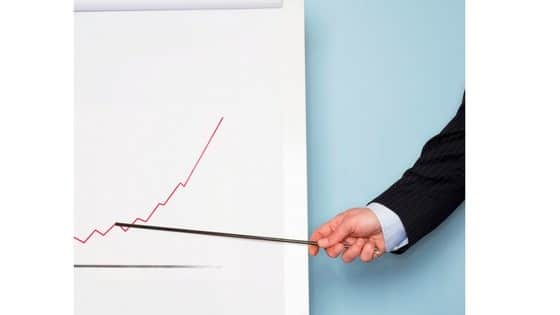
Strategic Pricing Analyst: What Is The Pricing Analyst Job Outlook This Year? ⚓
- Why do we need a pricing analyst?
- What does a pricing analyst do?
- What skills should a strategic pricing analyst possess?
- Do we hire for experience or potential?
- How much does a pricing analyst make?
- What strategic pricing analyst courses are available?
>Download Now: Free PDF Pricing Recruitment
Not knowing the answers to these questions is putting your company at serious risk of making bad hires. Hiring the wrong strategic pricing analyst support means placing the business at a serious financial disadvantage relative to competitors that do know the answers.
In this article, we will share insights on strategic pricing analyst duties and responsibilities. We’ll discuss some key skills required for high-performance pricing and revenue management analytics. We will reveal the current strategic pricing analyst salary ranges. Then we’ll discuss how to identify the absolute best pricing analysts for B2B pricing job descriptions, airline pricing analyst job descriptions, banking and insurance pricing analyst positions.
We strongly advise that regardless of industry, whenever you hire a pricing analyst, be sure to think carefully about team mix. You want great chemistry between your pricing team and other departments for the strategic mission of the team.
Table of Contents:
I. Strategic Pricing Analyst: What Is The Pricing Analyst Job Outlook This Year?
II. Pricing Analyst: 6 Hallmarks of A Standout Pricing Team
III. How Strategic Pricing Can Help Your Business Post-Pandemic
IV. 5 Simple Ways To Close The Pricing Skills Gap In Australian Businesses

Strategic Pricing Analyst: What Is The Pricing Analyst Job Outlook This Year?
Being good at maths is only the beginning…
Being good at numbers and maths is not enough to get pricing work done well in large organisations. We would go as far as to say that strategic pricing analysts (applying for insurance pricing analyst positions) with pretty good numerical skills, who can create buy-in and trust for new ways of pricing, will be better at commercial pricing in insurance and banking firms than a spreadsheet technician with a degree in pure mathematics and the ability to put together complex pricing models.
Here’s why…
The commonly viewed pricing discipline is technical numbers-based occupation suitable for accountants, modellers, and financial wizards. This view is not entirely accurate and often seriously misleading.
A strategic pricing analyst’s ability to drive results in multi-million and multi-billion-dollar firms comes down to their ‘softer’ skills and thinking styles even for airline pricing analyst jobs. Rather than technical skills and financial or accountancy knowledge. In particular, traits like communication, strategic influencing, team working and problem-solving style.
For many years now, the majority of businesses that have gone down the path of integrating a pricing function within their organisations have underrated the importance of hiring a strategic pricing analyst with the right mix of technical and soft skills. Many believed (like so many still do) that commercial pricing is either:
- complex mathematical modelling or;
- simple cost accounting (cost-plus pricing)
Neither view is entirely wrong or right, but both assumptions overlook the scientific nature of commercial pricing and how people garner influence in large corporations.
Don’t compromise on soft skills when you hire
More often than not, businesses have compromised on soft skills and hired technical spreadsheet wizards for pricing roles. Why? They have technical skills gaps that already exist in the company.
The knock-on effect of hiring too many spreadsheet technicians into pricing teams is that now a lot of pricing teams have lost their competitive advantage because they tend to solve pricing problems in much the same way (regardless of the business and industry).
Understanding costs and developing algorithms and equations are, of course, important to optimising price points, but they are also near-on-redundant if they lack resonance and significance with the market.
Pricing structure development and algorithmic pricing are the results of a series of test, trials, and experiments. An abstract model that churns through unreliable data testing irrelevant variables because there is no appreciation of cause and effect is destined to fail.
Read about our Job Hunting Guides: Top 5 Tips to Get Callbacks.
Spreadsheet technicians often struggle with customer value
Our research shows that pricing analysts with a technical profile tend to under-do the customer value management side of pricing work. Often, they lack interest and empathy for customers’ needs. Many find it difficult to identify, interpret or even listen to important customer and price signals. Instead, they favour financial and mathematical analysis and overlook psychological pricing completely.
Pricing analysts with a technical profile prefer data, not people. Their strength and intellectual comfort zone are financial analysis and number crunching. Their data skills are certainly rigorous. But their hypothesis and models are overly complicated and difficult to follow. This makes changing hearts and minds very difficult. As their presentations of the problem lack insight into the market.
While it’s easy to assume that a strategic pricing analyst with a technical profile and strong data skills is exactly what businesses need on their pricing team, think again. Technical pricing analysts (and pricing managers) will often take a dim view of the softer skills and stylistic differences.
Some will even say to you that the numbers are all that matter. Everyone else should improve their analytical skills. These are the very people you later complain don’t fit into your business. The toxic individuals. But they are also the people you hired because they do have really strong numerical problem-solving skills.
Compromising on softer skills for pricing team roles very often leads to bad hires and regretted decisions.
Blaming people for not being 100% across all dimensions (technical to soft skills) and then labelling them as bad hires lack accountability. You knew what they were like when you hired them. You thought they would somehow change overnight.
Improving softer skills and leadership (like maths, science and statistics) takes time. Yes, you can grow and learn, but you need people to give you room to grow.
Top-performing strategic pricing analyst always calibrates pricing analysis with market intelligence from the sales team
Analytical thinking or differences in how we solve the pricing problem is very important to understand when you hire a strategic pricing analyst. Analysts that are all about the numbers and overlook key information from sales, customers and the market need to be trained in other team working and analytical skills.
What’s more, they need to know how to listen and integrate other people’s viewpoints into their analysis. Numbers are not always right. Sometimes, other teams do know better. A pricing analyst’s job is to find out what they don’t know and learn. They should also know when to stop talking, ask more question and start listening to alternate viewpoints and opinions.
Team mix is incredibly important to high-performance pricing
Instead of trying to hire or train individual analysts to be equally strong on both sides of the equation, be careful about hiring both types of analysts onto your team. Then, those with stronger organisational and communication skills can help champion what the more technical-functional analysts and managers are finding and producing.
Our research shows that when there are too many strategic pricing analysts (and even pricing managers) with the same profile and behavioural and analytical tendencies on the team, the output is accurate, detailed but slow.
Many pricing teams have lots of people creating spreadsheets and pricing models to fix common and financial problems. But only a handful of pricing teams have the intellectual curiosity to get out from behind their desks and educate stakeholders and customers on the benefit of profitable revenue growth.
Intellectual conformity is a problem for many pricing teams
The problem with intellectual conformity in a pricing team (or having too many people take a technical functional view of pricing) is that it is incredibly difficult to solve new pricing problems. Especially when old methods and approaches no longer work.
Too many Australian businesses continue to build pricing teams with the same technical ‘back office’ wizard profiles in mind. Overlooking soft skills and leadership potential during the hiring process often leads to serious team performance issues that directly impact the bottom line.
Overall, we would go as far as to say that pricing analysts with well-rounded technical skills over time tend to out-perform spreadsheet technicians with deep knowledge of pricing software, accounting, finance, data science, specific mathematical methods and types of statistical analyses.
However, ideally, you need a mix of pricing analysts with strong personal and change management skills, some with curiosity, flair, and vast general commercial knowledge and some with technical knowledge and skills.
Again, don’t assume that you can find all these things in just one person. This is a very unrealistic and unhealthy expectation. Just imagine if the person who hired you put the same pressure of expectation on you.
Strategic Pricing analyst duties are multidimensional
Strategic pricing analyst duties are multidimensional. People are multidimensional. A pricing team is not just a human calculator. Rule of thumb: Pricing is 30% hypothesising, number-crunching and modelling and 70% getting the company to do it – especially in the early days. A lot of business still don’t realise this.
As a leader, it is crucial to build a pricing team that can range. This means finding people that are curious to learn what’s happening inside and outside their industry – and not just regarding pricing.
50% of pricing work is determined by your industry. You need people who can learn and adapt to trends changing your business model and market. Not just people who are really experienced in how the industry used to operate. Past experience in older models of thinking and working are becoming less useful to you.
Find analysts with these skills and capabilities…
There are some characteristics you should be looking out for when you’re hiring a new pricing analyst for your team (or evaluating your current team members). However, to keep things simple, there are three main characteristics you should identify during the hiring process if you want to hire a high-performing pricing analyst.
1. Pricing fundamentals
These are the basic numerical and financial reasoning skills that a pricing analyst should have if they want to work in pricing. Overall, we’d say you don’t need someone with a high distinction mathematics degree to be a successful strategic pricing analyst.
You do, however, need a pricing analyst who can organise numbers and critically think about what they mean. Typically, they are people who pass most maths tests pretty comfortably. They may not necessarily get the highest marks in the class. They are consistent performers.
Strategic pricing analysts are pretty good at maths and tend to be as good at interpreting and critically thinking about numbers as they are information
Whether the person you are considering has lots or not much experience, we highly recommend they have a certain level of numerical and analytical capability to succeed in the role.
Applicants for pricing roles tend to be pretty good at intermediate numerical reasoning, but not as good at applied mathematics
Our research shows that the pricing analysts (and commercial managers) tend to have higher levels of abstract numerical reasoning skills and lower levels of applied numerical reasoning and analytical reasoning skills.
These findings indicate that the candidate market for pricing roles tends to be pretty good at intermediate numerical reasoning, but not as good at applied mathematics.
This includes:
-
- cause and effect relationships/formula
- solving case studies
- analysing real-world problems
- using scientific method and process
We have found that pricing analysts with a good mix of pure and applied mathematics skills at leaving a certain level, can generally pick up more technical skills and knowledge quickly on the job or with training support.
Things like:
-
- statistics
- segmentation
- P&L analysis
- price segmentation
- scenario analysis
- data management
- data visualization
- and cost analysis
It’s great if you can find a job candidate who already has some of these technical skills, but if you can’t, these skills can all be learned. That is of course if a pricing analyst has the required level of maths skills and analytical thinking.
2. Analytical thinking
Most pricing managers think data sourcing, maybe basic price analysis (price, volume, cost, mix) is the definition of a pricing analyst role. However, our research on the evolving pricing discipline shows that top-performing strategic pricing analysts are good at translating findings into pricing and customer insights.
Critical thinking occurs in most pricing analyst duties. For example:
-
- data transformation
- price data architecture design and development
- hypothesis testing
- price trial design and development
- data interpretation
- constructing a price model
- understanding formulas and correcting them
- spreadsheet errors
Logical and adaptive reasoning skills underpin critical thinking capability
Critical thinking is what makes someone good at problem-solving because they don’t just take the first answer they get. They’ll evaluate it and calibrate it with what’s known and look for gaps (what is not known). Which means you need a pricing analyst who can get to the root of an issue and plan to correct it.
You can’t motivate a pricing analyst to learn advanced pricing if they don’t want to learn
Some analytical skills can be learned, to some extent. But making someone motivated to learn is impossible. They either have a passion for pricing or not.
It’s probably better to find out whether the pricing analyst you are considering for your strategic pricing or tactical pricing analyst role has the required level of analytical thinking across some key dimensions, including commitment, values and motivations.
Understanding a pricing analyst’s underlying values and motivations will help you know whether they’ll commit to the role and mission. You’ll also know what pricing courses are suitable for each individual on your team, including who would best benefit from training and development.
In this way, you’ll also know whether the analyst you hire can learn and apply more scientific approaches to price setting without making costly mistakes along the way.
3. Strategic influencing skills
Now, we come onto the soft skills required to be a great pricing analyst. Many soft skills you need in a high performing pricing analyst can be learned and developed. However, like always, there are always pricing analysts with a flair for pricing and a natural ability to strategically influence others to a new way of thinking about price.
Analysts with strategic influencing skills are good to have on a technical pricing team
Our research shows one of the greatest soft skills a top-performing pricing analyst has, is the ability to navigate through conflict (or conflict management skills). They are unafraid to ask questions and challenge pre-existing norms that may not work now. Engaged pricing analysts want to know why stakeholders or customers object to changing pricing so they can figure out how they can help them.
What you may be surprised to learn is that conflict management skills in all levels of pricing roles are extremely rare.
Our research indicates that conflict aversion is a pervasive trait in the pricing community. This means, from pricing analyst to pricing manager and even pricing executive level, conflict aversion is a dominant behavioural tendency.
Pricing people hate calling out issues and problems, which makes progress and learning slow. The pricing community are a very agreeable bunch. But sometimes you’ve got to make a stand, and people may or may not like you for it. At least they know your position and respect you for saying the truth.
It’s helpful if your job applicant already possesses some level of conflict management before you hire them
All pricing teams experience difficult price discussions on a daily basis with either internal stakeholders or customers. They’ll work hard to get their ideas across to create buy-in and change behaviours in other teams. Even departments and customers if they are on a B2B pricing team.
With this in mind, it also helps to hire someone with good manner and plenty of tact. Plus good presentation skills, and a solid understanding of change management.
This list is far from comprehensive. We have a resource that goes into more detail about what to look for in a new hire. If you are interested in learning more, download our complimentary e-book. Five ways to double EBIT, helps learn how to make a good hire and remove the wrong ones that just aren’t working out.
Avoid pricing analyst role bias
If you want to hire someone with strong analytical skills, a pricing analyst with mathematics background might not be right. You need someone who has an affinity for numbers. You also need someone you can apply their math skills to create practical pricing models.
Add someone who has a natural curiosity and the tenacity to keep positive and working in spite of obstacles. Plus the ability to look at something from a big picture perspective.
Try to avoid role bias when you hire your next pricing analyst
If you want to hire a high-performing pricing analyst, we highly recommend not relying on CVs or interviews alone. Experts globally have significant research to show that CVs are by far the weakest predictors of job performance. Our research indicates that the same is true for pricing teams.
With this in mind, take care when you screen applications. These days, more HR departments use automated systems to evaluate CVs. It’s difficult to use these programs (or even sought through by hand) when your best candidates may have a poorly written CV. More often than not, the best strategic pricing analysts may not have a particular degree, experience, or resume keywords to search for.
Often it’s the people with the bad CV or interview that are the ones with the capabilities to drive results
Sounds strange, but CVs don’t give you a clear picture on someone’s real pricing capability. We commonly find that the strategic pricing analyst with the 1st class Mathematics degree, or best VBA or SQL skills is not the best person for the job.
Technical skills are great to have, but they are not vital to solving complex or new pricing and business problems.
Don’t rely on standard testing to help you find the best pricing analysts either
Off-the-shelf IQ or aptitude tests are not testing the right analytical capabilities you need on your team.
Overlooking the very traits and skills you want to know more about is bad news for your pricing department. You’ll end up passing over real pricing talent for your strategic pricing analyst roles. And worse still, you’ll hire human calculators. They are great at passing tests but not great at doing the job or solving difficult, real-world pricing problems.
How much does a strategic pricing analyst make?
After recruiting hundreds of commercial roles over the last 15 years, we’ve seen businesses pay too much and too little for pricing analyst salaries. So how much does a strategic pricing analyst make, you ask?
Well, that depends. If you find someone with the right skills, potential, capability and mindset, they’ll be invaluable to you. Pay them well. Offer them a good base salary and an attractive performance bonus. Don’t let restrictive salary range and structure be the reason they chose your competitor’s offer over yours.
Talented pricing analysts have no trouble showing you what they can do. They like performance bonus. But it has to be worth their while (not just a couple of per cent increase based on total company performance). They also know their ability and skills are limited by skills and capability gaps in the team or systems limitations. So be fair.
Rule of thumb on salaries:
$60 – 80K for junior pricing analysts.
$80K – 120K for mid-level pricing analysts.
$115K – 140K for strategic pricing analysts.
$135K – 180K for pricing specialists.
These are approximate salary ranges that vary by industry and company. Our research indicates that companies that pay pricing teams well, tend to understand the profit value a world-class pricing team can deliver.
Hiring mistake are costly and take years to resolve
Unfortunately, the cost of hiring the wrong person can be quite high. We estimate that it costs at least double their salary. Others say the total is more like two to five times the person’s annual salary. This depends on how high up they are on the corporate ladder.
And that only covers the replacement costs. It doesn’t take into account the damage that the bad hire is doing while they are on your team. Bad pricing hires may make errors that lead the company to poor decisions across the board.
Toxic individuals cost the company money without providing a commensurate level of productivity. Poor performing analysts may have bad attitudes which spread like a contagion. Many bad hires don’t have the energy or motivation to identify opportunities or improvement and let their work slide.
Bad hires make your team or department an unpleasant place to work
Toxic people alienate their own team and even peers from other departments. Silos soon form, and other stakeholders don’t seek the pricing team’s advice anymore because there’s a bad attitude and little value add.
In some cases, we have seen how the presence of a toxic individual on a pricing team will lower team morale and the more valuable team members will leave the business.
〉〉〉 Get Your FREE Pricing Audit 〉〉〉
Conclusion
For many years now, the majority of businesses that have gone down the path of integrating a pricing function within their organisations have underrated the importance of hiring a strategic pricing analyst with the right mix of technical and soft skills.
Generating results from pricing analysis requires more than technical spreadsheet modelling
Our research shows that when a pricing analyst’s problem-solving style is linear, logical and based on a mathematical evaluation; price analysis tends to be accurate but slow as they pay greater attention to not getting things wrong. Data interpretation is numbers-driven as there is a limited understanding of cause and effect in the discipline and market at large.
In fact, after years of studying high-performance pricing, we find that the abilities and skills to generate results from pricing analysis in large organisations require more than technical spreadsheet model or knowledge of technical pricing software and systems. It takes strategic pricing analysts with diverse and high-level problem-solving styles.
Hiring pricing analysts is becoming increasingly difficult, as the pricing discipline and organisational requirements change so rapidly.
Our advice is to try to avoid role and people bias when you hire your next strategic pricing analyst.
Did you know that…
How you set up and recruit strategic pricing analysts is a key determinant of how fast you can accelerate earnings growth. With the right pricing team strategy and implementation in place, incremental earnings gains can begin to occur in less than 12 weeks. After 6-12 months, the team is often able to find additional earnings. They identify more complex and previously unrealised revenue and margin opportunities.

Pricing Analyst: 6 Hallmarks of A Standout Pricing Team 🚪
Are you setting up a new pricing analyst capability?
Have your pricing analysts lost their way – struggling to transition to a new way of operating and slow to identify new revenue and margin opportunities?
Do you want to know how to set them back on the track to high performance?
Defining what a high-performing pricing analyst hire looks and sounds like is not easy: Pricing and revenue management is a fast, evolving discipline. It can be difficult to define the qualities, skills and traits required to generate profitable revenue growth – especially in highly competitive and often disrupted markets.
And many job descriptions don’t quite get it right either…
If you look at Australian job boards, for instance: The majority of job ads describe pricing analyst roles as either a mass of daily operational tasks or data management duties. Sometimes it seems like you’re reading a job ad for a finance manager or junior accountant – not a pricing analyst or manager.
Vague or inaccurate job descriptions broaden skills gaps
So in this article, I’m going to examine what it really means to have a world-class pricing analyst capability, what elements you should include in your pricing analyst job description, the value pricing analysts bring to your organisation, and what HR initiatives are required to improve your pricing analyst capability and drive 10% – 15% EBIT growth in the next 5 years.
I will argue that the best pricing analyst in Australia exhibits 3 important characteristics:
- Domain price mastery
- Diversity of analytical thinking
- Stakeholder engagement
The main content here is: That pricing analyst job descriptions tend to be narrowly defined with a focus on technical skills. What’s more, they seem to be getting narrower instead of capturing the broader skills required for today’s pricing analyst.
What is a Pricing Analyst?
To understand what constitutes a high-performing pricing analyst, you’ll first need to know some pricing analyst job description basics. Here’s a short overview:
- The role of a good pricing analyst is to support the pricing leader to make more revenue and margin.
- Their core responsibilities are managing and analysing a whole range of data and information sources to identify previously unrealised revenue, pricing and margin opportunities.
- The mission is to find your business low-risk revenue, pricing and margin opportunities so that you can accelerate earning growth using safe and innovative pricing strategies.
- Their management style is to work laterally across an organisation to achieve shared goals and deliver incremental EBIT growth in 3, 6, 9 monthly intervals.
Changing Pricing Analyst Roles and Responsibilities
While today’s fashion favours pricing analysts with an accountancy or finance background or the latest Big Data skills, this is not wholly accurate. In many respects, a misleading view of the role of pricing analyst.
Here are some of the more relevant analytical thinking styles and skills to consider for the future:
-
Customer Value Driver Analysis
Yes, pricing analysts use quantitative and qualitative methods to analyse competitor pricing, assess market share and margins. But they also seek to understand why a customer values your products and services to inform strategy and segmentation? Understanding customer value is the secret source to unlocking your pricing power.
-
Demand Forecasts and probability models
Yes, pricing analysts refer to a variety of statistical modelling methods to prepare reports, identify revenue and margin opportunities. But they shouldn’t necessarily be creating them, but rather identifying key trends and dismissing irrelevant or misleading data.
-
Commercial pricing and marketing strategies
Pricing analysts also work closely with sales and marketing teams to develop competitive pricing strategies. However, they are not there to be a barrier to growth – i.e., the pricing policeman. Pricing analysts are there to make it easier for sales teams to win more deals. They should be providing tools, advice and insights to deal with procurement; win profitable deals and inform sales and marketing efforts.
-
Competitive Intelligence and Industry Trends
Yes, pricing analysts are always looking for patterns and trends in data. Analysts want to make connections that grow the share of the pie and wherever possible increase share of wallet. They are focused on price and value differentials in the market. Pricing Analysts are not there to build dashboards from scratch.
-
Pricing Tools
Can also develop quoting tools and contract modelling tools if they help sales or category teams yield more profitable price points, deals and transactions. And will even develop business development dashboards if this means generating more profitable deals. They are not there to build overly complicated price models and data tools to 99.9999% accuracy – especially if no one else can or wants to use them.
-
Storytelling and Presentation
Yes, pricing analysts need to be able to tell a story with data so that other people get motivated to capture new revenue and pricing opportunities too. Pricing analysts also need to be good at formulating a convincing argument to make sense of their findings. They’re not there though to hammer stakeholders with numbers and facts. They need to be able to read a room and understand when a message is getting through or not. Can be able to adjust their style and message accordingly.
Implications
- Softer skills are vital because they affect overall job performance. In fact, research shows that exceptional analysts are 300% more productive than average analysts; and 1 1/2 times better than core performers and 900% more productive than poor performers
- Pricing analyst with higher levels of domain price mastery and analytical thinking are measurably better than novices; with limited pricing knowledge and a long list of technical skills or sales or finance experience.
- The majority of pricing titles and job descriptions are detrimentally reshaping the pricing workforce and lowering the talent benchmark.
〉〉〉 Get Your FREE Pricing Audit 〉〉〉
Conclusion
It’s time to re-define high-performance pricing and bring together the absolute best pricing leaders, and pricing analysts to drive business strategy and new cultural norms.
Having the right pricing analyst capability on board can mean securing an additional 2%-4% profit in the bank.
Not having the right pricing analyst capability can mean missing out on 1-2% of margin every year.

How Strategic Pricing Can Help Your Business Post-Pandemic💭
Strategic pricing can help your business survive the economic downturn caused by the COVID-19 crisis. Many business leaders, however, don’t have the head-space to contemplate this right now due to the intense pressure to cut and manage costs in their businesses. But, the question remains. Should leaders really be focusing their time and efforts on cutting costs and essentially slowing down the economy? Or, should they be attempting to create and capture value to pump money back into a dying economy?
The answer is not clear-cut. Some businesses and sectors are seeing demand increasing exponentially right now. Others are less fortunate and are in survival mode or in the process of liquidation. With that in mind, what should companies do right now? Should they focus on long-term value or short-term gains to survive? Can they do both?
Let’s look at it this way, almost every public and private institution is trying to deal with this crisis in the best way they can. Their major priorities are now to protect:
- the health and safety of their employees and families
- the business’ financial situation
No businesses mean no employment. After all, businesses are the source of livelihood for billions of people.
At the same time, the pandemic is creating sudden and unprecedented pressure on the economy. And, more often than not, this pressure is pulling down on demand and pricing, which in turn is destroying balance sheets.
In many sectors, from air travel to durable goods, demand is down. With that, heightened price sensitivity is coming together to drive down prices and destroy value. On top of this, many customers are asking for discounts and renegotiating contracts. Some competitors are making aggressive pricing decisions.
In other sectors, conversely, from shipping and groceries to medical supplies, demand has risen to levels never anticipated in early 2020, putting upward pressure on prices with many instances of price rise mismanagement and price gouging reported in the news.
In this article, we’ll discuss how companies can survive through the pandemic using strategic pricing.
We’ll argue that most companies will still need to sustain value to both survive the crisis and protect their employees’ livelihoods. In saying that, we recognise that the situation will be different across industries and geographies, so we are providing an overview of pricing considerations, not specific advice for any one company.
We believe that the companies that emerge in the strongest positions will be those who take a longer-term view of their dealings with customers and the communities. Including carefully considering the impact of their revenue management practices and price actions on the market.
By the end of this article, you will gain some pricing options that will enable you to be flexible and creative as you support your staff and customers in this tough time.

A guide to help pricing leaders cross the murky territory of strategic pricing during and post COVID-19
While it’s difficult to take a long-term assessment that changes every day during the pandemic, we expect that companies will be at their best, easing customers’ pain points with flexible payment options, unbundling, and one-time promotions. In effect, they will drive long-term value creation rather than seek short-term advantage.
Every business faces a wide range of different challenges nowadays. There is no one-size-fits-all solution for all of them. However, it would be beneficial to take into considerations the pricing challenges in the three major market contexts:
-
Businesses facing a sharp decrease in demand
The industries that are severely affected because of the social distancing and isolation guidelines of the government are food service, airlines, and, hotels. Several of these businesses offering big discounts as their competitors also try to lure the few remaining customers. However, for many companies, pricing is now beside the point in this kind of market scenario.
When everything is in place, like health and safety measures are established, companies should focus on sustaining cashflows and preserving major assets and talent to get through the crisis. Providing a steep discount is hardly ever a road to long-term success.
-
Businesses facing a dramatic increase in demand
Companies providing essential products and services, like medical supplies, cleaning, toilet paper, and shipping are now hurrying to expand capacity. Not only that but also businesses with highly sought-after products by people confined to their homes, from canned food to gadgets, and home entertainment.
Businesses may see it as a rare opportunity to produce greater profits; however, price gouging could give a company a negative brand image and even legal consequences too. Suppliers should not take advantage of an emergency by sharply increasing prices on essential goods or services.
-
Businesses with slow-moving goods
Some businesses not directly affected by the crisis are consumer electronics, landscaping, and home improvement. They may also feel the effect of a general slowdown but at the same time getting a modest improvement as people’s lives change both at work and at home. Many of these companies under this kind of marketplace have a chance to take near-term pricing measures that preserve and create value.
Four things that a strategic pricing analyst should do during the pandemic
- Ensure that every pricing action is legal and moral. It’s not the right time to raise prices on essential goods or services sharply or to ignore contracts, especially during a humanitarian crisis. Price increases should honestly reflect increased costs.
- Monitor key customers’ evolving needs. Maintain a long-term outlook. Customise offerings and contracts according to the new situations and build stronger value-proposition communication. Providing loyal customers with incentives can also strengthen relationships while decreasing incentives to shift to a competitor.
- Reinforce value-focused communication. Customer price sensitivity may be affected depending on the business and customer group. Effective suppliers should be able to explain the best value they provide compared to the next best alternatives in the market.
- Provide flexibility or temporary pricing. Make sure to address customers’ short-term pain points without destroying value in the long run. For example, instead of lock-in long-term, discounted settings, explore other ways such as offering flexible payment terms, one-time promotions, or other approaches that align the offer or pricing framework to near-term needs while offering flexibility for the future.
Things that a strategic pricing analyst should not do during the pandemic
Do not take advantage of customers
As mentioned, it’s not the right time to raise prices on essential goods during a downturn. As a matter of fact, during the outbreak, five Washington businesses were ordered to stop selling hand sanitiser, protective masks, and related items at very high prices through Amazon.com by the Washington State attorney general. If not, they’ll face lawsuits and fines of up to $2,000 per violation.
Never assume that pricing can solve every demand problem
During a crisis, customers may hold off on buying things because definitely, their needs have significantly changed. Excessive discounting may not raise the volume and can even destroy value instead of building it.
Don’t depend on old price-sensitivity data
In a changing market, market price tests, research and data become outdated after a few weeks or months. Therefore, to better understand changing price points, businesses should conduct new pricing-sensitivity study and market price tests right away. Most especially for higher-volume products and offerings.
Do not reduce prices without thinking of other options
Instead of slashing list prices, businesses may offer temporary promotions, discount vouchers, or other discounts that would help build volume.
Avoid making any strong competitive moves
A business should know their company’s position in the market. They should also anticipate competitors’ probable reactions, and be ready to respond before making any strong competitive moves.
What should be the next move?
Regardless of the uncertainty, we strongly believe that companies can continue to use some best practices and guidelines. For instance, businesses should look for opportunities that maintain value. Then, make each big decision in the next few months focusing on the long-term implications for the business, employees, communities, customers, and suppliers. They can search for win-win situations to help both customers and employees, staying flexible and focused on maintaining lasting relationships.
Since nobody knows how long this downturn will last, businesses can start getting ready for the recovery. They can use downtimes to establish capabilities and enhance pricing processes. Companies should focus on value and avoid huge cost-cutting measures that could do more harm than good in the long run.
Implications
The pandemic has created challenges for the businesses to stay relevant in the changing environment and make contingency plans to preserve the companies.
The first priority for the companies is protecting the health of their workers and their families. What good is a company without its workers?
Long term goals in maintaining the company will get through the crisis instead of imposing price hikes in their products. This could ruin their image to the community.
〉〉〉 Get Your FREE Pricing Audit 〉〉〉
Conclusion
In this terrible and confusing moment, each of us has new opportunities to show courage, compassion, and wisdom. And while no one knows how long this crisis will last, pricing leaders can begin preparing now for the recovery by using the downtime to build capabilities and improve pricing processes.
An unwavering focus on value can help organisations avoid extensive cost-cutting exercises that, in the long run, could do more harm than good.
Successful companies will survive the pandemic by implementing flexible plans for their customers. Also, they will find innovative ways to drive long-term value creation rather than seek short-term advantage.

5 Simple Ways To Close The Pricing Skills Gap In Australian Businesses
Pricing skills: Taylor Wells advisory firm observes pricing team turnover is on the rise in Australia and continuing to increase.
Many pricing leaders and teams are not delivering results and outcomes expected of them.
Boards and leadership teams are questioning whether they have the right executives leading wider business and pricing transformations.
Pricing skills: Our research shows substantial pricing skills capability gaps across a large majority of teams impacting pricing decisions every single day. This is corroborated by various third party studies.
Hundreds of millions of dollars are lost due to a combination of uninformed pricing decisions, resistance to change, and people covering up mistakes and weaknesses.
Due to pricing’s status as an emerging discipline, pricing analysts and pricing managers are being hired without the necessary pricing skills or experience needed to function effectively.
The result of bad hires unfortunately is lost revenue and margin opportunities and dysfunctional team behaviour.
Taylor Wells is a real revolution in helping companies improve their commercial capability and delivering sustainable margin improvements.
We help companies plan and scope their future pricing strategy and capabilities and then enable the recruitment and team-building required to implement the strategy.
In this article, we want to share with you how you can use your recruitment process to accelerate the type of thinking and behaviours you want to see in your teams and culture. Consequently, help you to stop the dysfunctional pattern now. We will also give you an outline of a 5-step process to build a high-performance pricing team in the right way.
What are the 5 easy ways to close the pricing skills gap?
1.Define key competencies & behaviours
Most pricing job descriptions are vague, a little confusing or nondescript. We commonly see jobs ads published with several lines clearly copied from other job adds.
People need to know what is expected of them. Not all pricing teams are the same. Assuming they are, will confuse people applying for new pricing roles.
Tell people in plain English what the job entails. Explain the business vision – get them motivated and enthusiastic about being a part of something great.

Then give them realistic performance measures that are clearly aligned to what they are doing.
How can a person be successful in a pricing role when they don’t know what they’re supposed to be doing or what they need to do to get recognised?
2.Evaluate team capability & potential
Stop wasting time, measuring the wrong skills. We see cost accountants and finance people in pricing roles. Don’t assume great technicians make great pricing managers. Often, they don’t.
Get advice on what pricing competencies, traits and behaviours are before you hire or restructure your team.
Compare your team’s relative capabilities using cross-industry benchmarks.
Pricing team benchmarking for individual pricing capability is available. Make the most of this information.
3.Ask people the right questions
You’ve only got a limited time (usually 1 hour) to find out whether someone is going to be a good fit for a role. Make it a useful hour.
The opportunity cost of a bad hire is enormous. Not just because of wasted salaries and millions of dollars down the drain every single day, but in terms of loss opportunity, revenue loss, lost customers, losing credibility, wasted time and effort… not to mention the stress and burden underperformers place on team morale and productivity.
4.Get people to showcase their talent and abilities
There are a certain class of people out there who have spent time gaming the interview and CV screening process.
They know exactly what you want to hear. They are interview performers.
Try to avoid falling for people with a slick interview performance. Being good at the interview does not necessarily equate to authentic leadership and real capability.
Often the opposite is true…
Our research shows, for example, that managers that overrated their pricing capability during interviews, on their CVs and/or in surveys tended to perform poorly in our online Pricing & Commercial Assessments (PCA).
Don’t simply trust what you hear:
- Find evidence.
- Get talented people engaged and motivated in your story and plans during the recruitment process.
5. Find out how people behave when you are not there
The source of truth about future performance is someone’s ability to work well in teams. Do they gain other people’s trust and buy-in or do they repel people to the point of them leaving the team?
Do your teams pull together? Or do they drive a wedge between teams and created cross-functional rivalry?
People copy people. Good and bad.
Bad role models infect a business culture and ultimately destroy team performance.
Good role models are highly qualified/skilled. They genuinely care and show compassion for others. They know what they are talking about both from a technical standpoint and from a people management/leadership position.
Find out who these people are using carefully curated talent networks and screening processes.
Top tips
Bad hires can happen to any business, but if they happen repeatedly in a pricing function it is generally because something is wrong with how teams are set up and qualified during the recruitment and hiring process.
Recruitment is one of the best ways to create cultures that enable high-performance teams.
Unfortunately, it is an industry marred by charlatans, and spiv recruiters only interested in making a quick buck.
Pick your recruitment partners very carefully.
But most importantly, set up your team properly. Integrate the function into your wider business. Position them for success.
When pricing teams do not know what is expected from the outset, and responsibilities and performance metrics are not aligned with business strategy, they underperform and fail to deliver key outcomes and results.
Don’t let your recruitment process be the reason you allowed unsuitable people into the business.
Organise your people for the future of pricing in the best way possible.
Introduce a more scientific approach to teambuilding.
Design innovative recruitment programs that will help you carefully examine and identify the best people for pricing roles.
〉〉〉 Get Your FREE Pricing Audit 〉〉〉
Conclusion
Before hiring or restructuring your team, get advice on what pricing competencies, traits and behaviours are.
Not all pricing teams are the same. Thus, make your job ads clear. Tell people in plain English what the job entails or what is expected of them. Get them motivated and enthusiastic about being a part of something great.
Following the 5-step process discussed above will stop the dysfunctional pattern and help you and your business build a high-performance pricing team in the right way.
Click here to download the whitepaper setting out your new pricing framework.
For a comprehensive view on building a great pricing team to prevent loss in revenue,
Download a complimentary whitepaper on How to Build Hiring Capability To Get The Best Pricing Team.
Are you a business in need of help to align your pricing strategy, people and operations to deliver an immediate impact on profit?
If so, please call (+61) 2 9000 1115.
You can also email us at team@taylorwells.com.au if you have any further questions.
Make your pricing world-class!
Related Posts
Leave a Reply Cancel reply
Categories
- marketing strategy (20)
- Organisational Design (14)
- Podcast (114)
- Pricing Capability (68)
- Pricing Career Advice (10)
- Pricing Recruitment (15)
- Pricing Strategy (199)
- Pricing Team Skills (10)
- Pricing Teams & Culture (15)
- Pricing Transformation (25)
- Revenue Model (10)
- Sales Effectiveness (15)
- Talent Management (5)
- Technical Pricing Skills (29)






